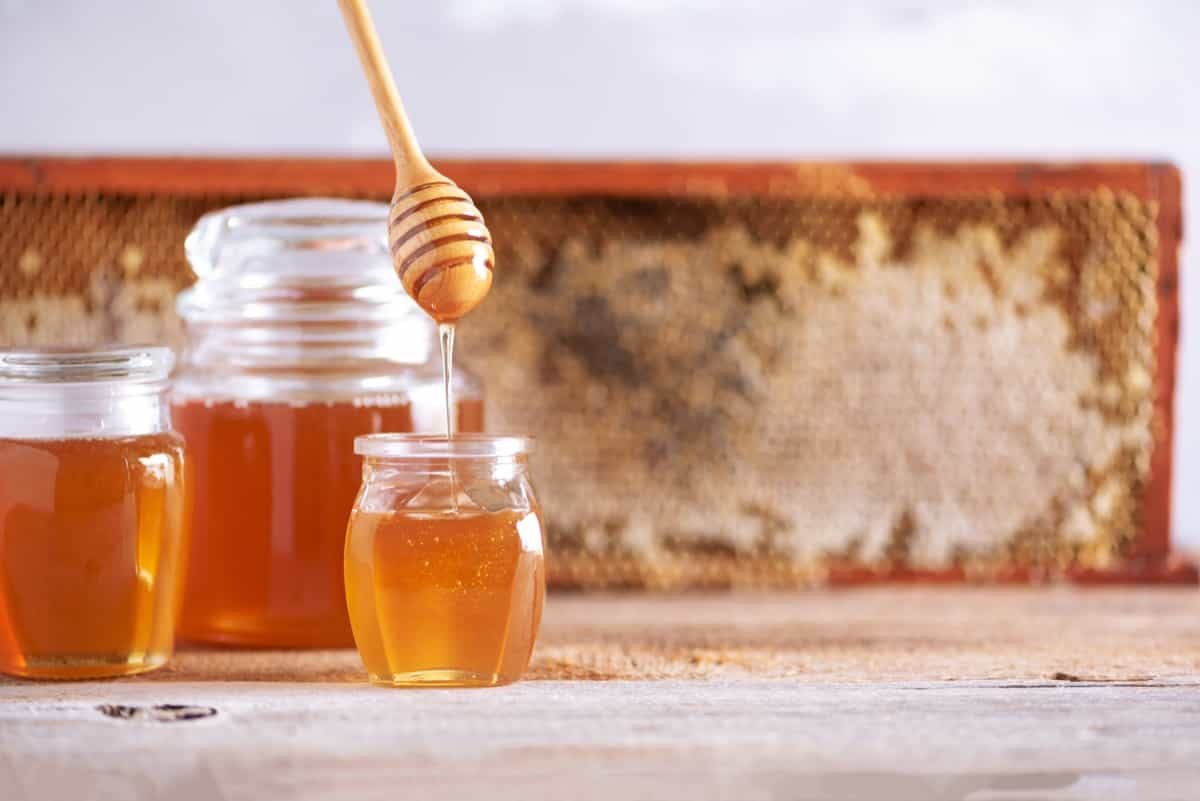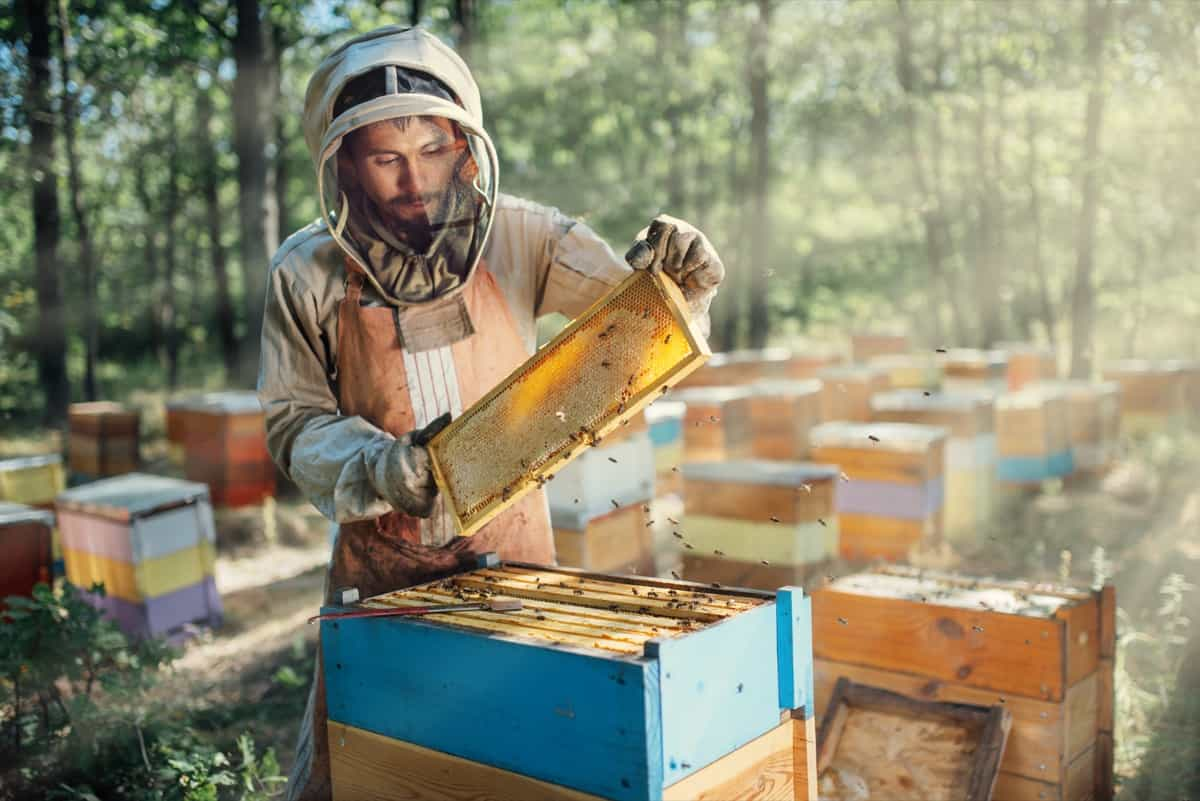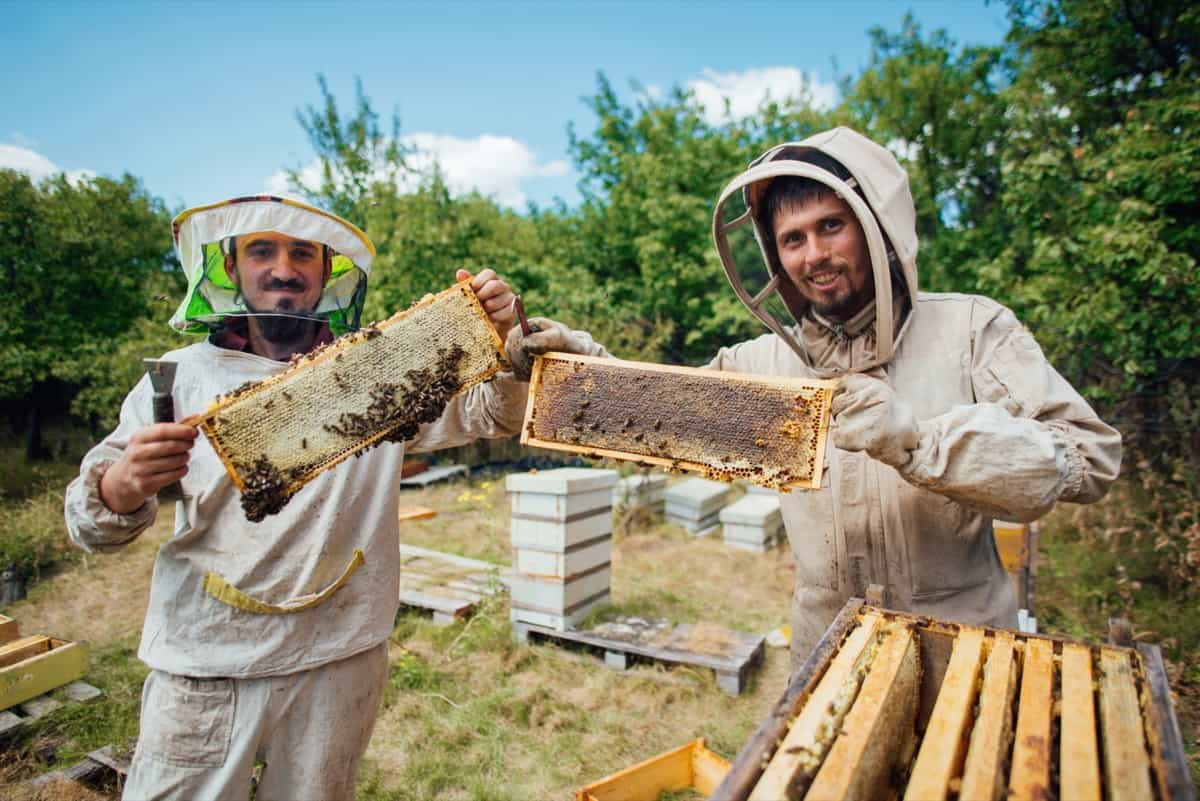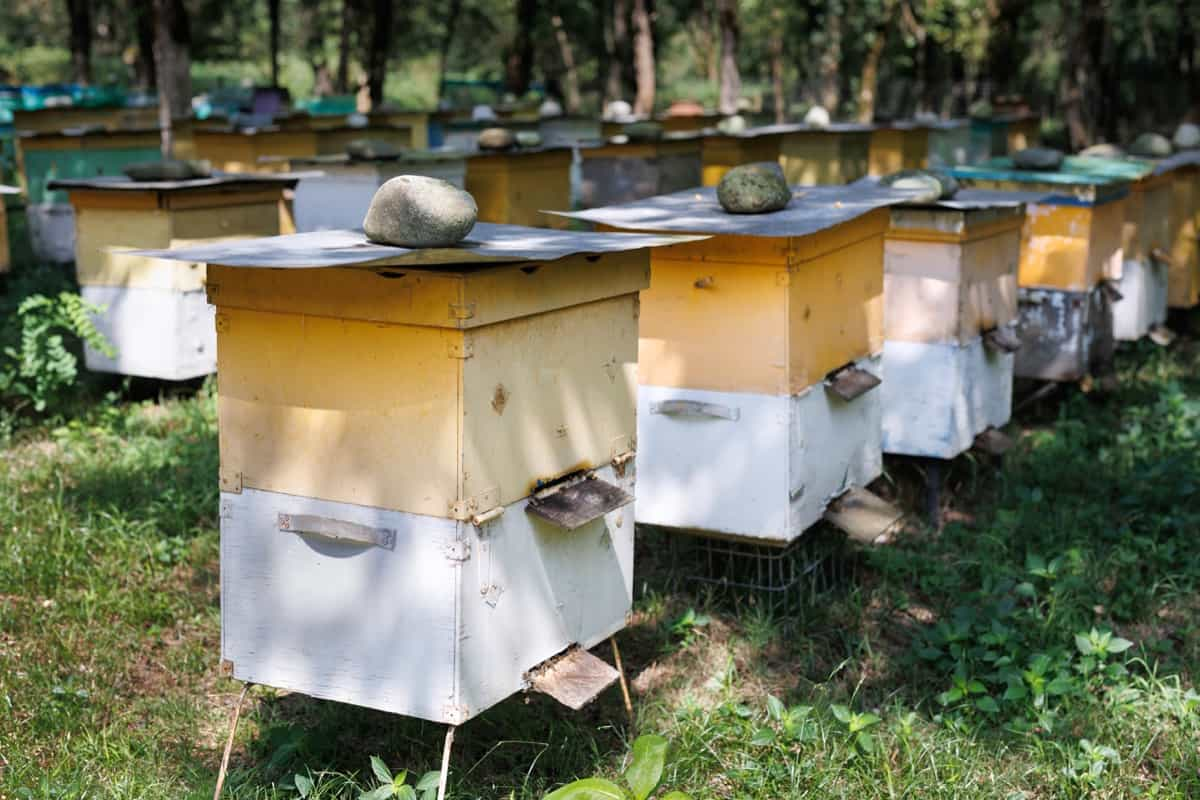Apiculture is the practice of beekeeping, cultivating, and managing bee colonies, primarily for producing honey, beeswax, and other bee-related products. Beekeepers, known as apiarists, create and maintain hives for honeybees, ensuring their health and productivity. This ancient agricultural pursuit has cultural, economic, and environmental significance.

Apiculture involves various tasks such as providing suitable hives, monitoring bee health, and harvesting honey and beeswax. Beyond its economic value, apiculture contributes to sustainable farming practices and ecological balance. However, it faces habitat loss, pesticide use, and disease-threatening bee populations. Researchers and beekeepers work together to raise awareness of the importance of these crucial pollinators to our ecosystems.
Basics of Apiculture
Beekeeping for Beginners
- Equipment: Beginners need to invest in essential beekeeping equipment such as hives, protective gear (bee suits, gloves, veils), and tools (smokers, hive tools).
- Choosing the Right Location: Selecting a suitable location for your beehives is crucial. It should offer access to forage, be sheltered from extreme weather, and comply with local regulations.
- Bee Species: Honeybees are the most common species used in beekeeping. You can choose between different subspecies, such as the Italian or Carniolan honeybee.
- Basic Bee Biology: Understanding the life cycle of bees, the roles of different castes (queen, worker, drone), and their behaviors is fundamental.
- Hive Types: There are various hive designs, including Langstroth, top bar, and Warre hives. Each has its advantages and disadvantages.
Importance of Honeybees in Apiculture
- Pollination: Honeybees are essential pollinators for many fruit and vegetable crops, contributing significantly to global food production.
- Honey Production: Honey is the most well-known beekeeping product and has been used for its nutritional and medicinal properties for centuries.
- Beeswax: Beeswax is used in various products, including candles, cosmetics, and skincare items.
- Pollen and Propolis: Pollen and propolis are used in dietary supplements and natural remedies.
- Ecological Balance: Honeybees play a role in maintaining biodiversity by pollinating wild plants.
In case you missed it: How Much Money Do Beekeepers Make: A Comprehensive Analysis of Beekeeping Profits

Beehive Management Techniques
- Regular Inspections: Frequent hive inspections help monitor the colony’s health, check for diseases or pests, and ensure the bees have enough space and food.
- Feeding: In times of scarcity, beekeepers may need to provide supplementary food like sugar syrup or pollen substitutes to ensure bee survival.
- Disease and Pest Management: Learn to identify and manage common bee diseases (e.g., American Foulbrood) and pests (e.g., Varroa mites).
- Swarm Control: Understand swarm prevention and management techniques to avoid the loss of your bee colony.
- Harvesting Honey: Harvesting honey should be done with care to ensure minimal disturbance to the bees and to maintain colony health.
Types of Honey Bees Used in Apiculture
Apiculture, or beekeeping, primarily involves three main types of honey bees: Apis mellifera, Apis cerana, and Apis dorsata. Apis mellifera, commonly called the Western honey bee, is the most popular choice due to its high honey production and docile nature. It includes various subspecies, such as the Italian and Carniolan bees.
Apis cerana, the Eastern honey bee, is found in Asia and is smaller than A. mellifera. Apis dorsata, the Giant honey bee, is known for its large colonies and honeycombs. These bee species have unique characteristics and behaviors, making them suitable for different climates and apicultural purposes.
Honey Production and Extraction Methods
To extract honey, beekeepers first calm the bees using smoke. They then remove the wax caps from the honeycomb cells using a hot knife or centrifugal extractor. Then, these frames are placed in a honey extractor, which uses centrifugal force to sling the honey out of the cells. The honey is collected at the bottom of the extractor and filtered to remove impurities like wax and bee parts.
It’s then stored in containers for packaging. Modern techniques have introduced innovations like flow hives, which allow honey to be extracted without disturbing the bees or opening the hive. This reduces stress on the colony and makes honey extraction more efficient.
In case you missed it: How to Start Backyard Beekeeping in 10 Steps for Beginners

Pollination and Its Role in Apiculture
Pollination is a vital component of apiculture, as honey bees are key in pollinating various crops and wild plants. Bees transfer pollen between flowers, facilitating fertilization and fruit or seed production. This service is crucial for agriculture, as many crops rely on insects for pollination for yield and quality.
In apiculture, bees indirectly contribute to crop production by providing honey and other hive products. Beekeepers often move hives to different locations to assist with specific crop pollination needs, further highlighting the significance of pollination in apiculture. Sustainable beekeeping practices and pollinator conservation efforts are essential to ensure the continued success of both beekeepers and agricultural ecosystems.
Common Diseases and Pests in Beekeeping
Beekeeping faces several common diseases and pests, including Varroa mites, Nosema disease, and American foulbrood. Varroa mites are parasitic arachnids that weaken bees by feeding on their hemolymph, transmitting viruses in the process. Nosema is a gut parasite that impairs digestion, and American foulbrood is a bacterial disease that destroys bee larvae. These threats can weaken bee colonies, reduce honey production, and threaten pollination services. Regular monitoring, integrated pest management (IPM) strategies, and chemical treatments when necessary are essential to combat these issues and maintain healthy bee populations.
Sustainable Practices in Apiculture
Sustainable apiculture involves environmentally responsible beekeeping practices. Key principles include promoting biodiversity, avoiding habitat destruction, and minimizing chemical inputs. Beekeepers can create pollinator-friendly landscapes, provide diverse forage, and reduce hive stressors.
Organic beekeeping, bee-friendly agricultural practices, and hive management techniques like swarm prevention and split colonies can enhance sustainability. Additionally, education and outreach are crucial to raising awareness about bees’ vital role in ecosystems and the importance of their conservation.
Apiculture Regulations and Guidelines
Apiculture is subject to regulations and guidelines to ensure the health of bee populations and the safety of bee products. These regulations often cover hive registration, disease management, and honey labeling. Guidelines typically include best practices for hive management, pest control, and ethical treatment of bees.
Compliance with these regulations helps prevent the spread of diseases and maintains product quality. Beekeepers should consult their local agricultural authorities and industry organizations to stay informed about specific regulations and guidelines in their region.
In case you missed it: A Guide to Organic Beekeeping for Sustainable Apiculture

Conclusion
In conclusion, beekeeping, or apiculture, is a multifaceted and vital practice that encompasses the care and management of bee colonies. As stewards of these remarkable insects, beekeepers must prioritize their colonies’ well-being through proper hive management and disease control.
- Feed Your Flock for Less: Top 10 Tips to Save on Chicken Feed
- Ultimate Guide to Ossabaw Island Hog: Breeding, Raising, Diet, and Care
- Hatching Answers: The Top 10 Reasons Your Chickens Aren’t Laying Eggs
- Eggs and Economics: Breaking Down the Cost of Raising Backyard Chickens
- Defend Your Greens: Proven Methods to Keep Iguanas Out of Your Garden
- Ultimate Guide to Cinnamon Queen Chicken: A Comprehensive Guide for Beginners
- Ultimate Guide to California Tan Chicken: Breeding, Raising, Diet, Egg-Production and Care
- Ultimate Guide to Marsh Daisy Chicken: Breeding, Raising, Diet, and Care
- 10 Types of Chicken Farming Businesses You Can Start for Profits